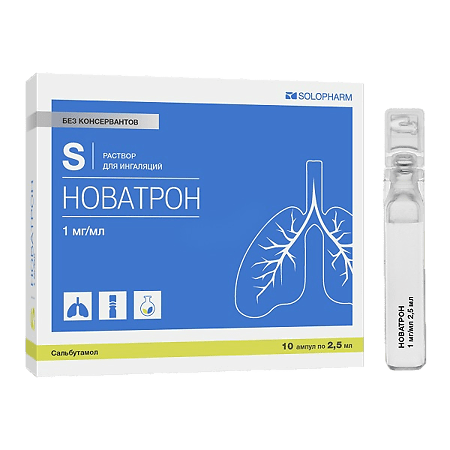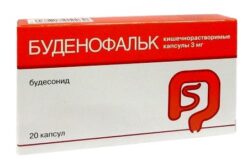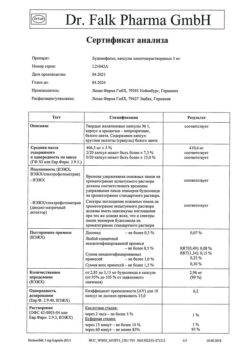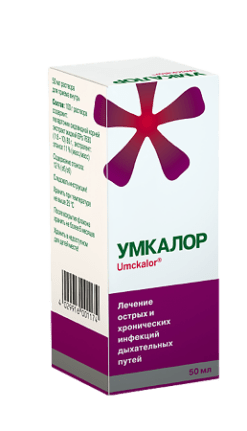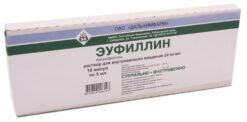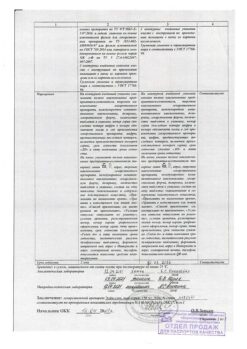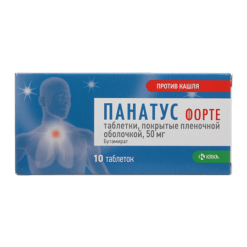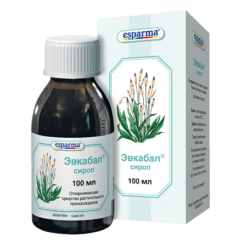No products in the cart.
Novatron, 1 mg/ml 2.5 ml 10 pcs.
€5.25 €4.37
Description
The bronchodilator in therapeutic doses has a pronounced stimulatory effect on the beta2-adrenoreceptors of the bronchial blood vessels and myometrium. It has practically no effect on the beta1-adrenoreceptors of the heart.
It has a marked bronchodilator effect, preventing or stopping spasm of the bronchi; it reduces resistance in the airways and increases the vital capacity of the lungs. Increases mucociliary clearance (in chronic bronchitis up to 36%) stimulates mucus secretion activates the functions of the atrial fibrillation epithelium. It may lead to a decrease in the number of beta-adrenoreceptors.
It has a number of metabolic effects: it decreases the concentration of potassium ions in the plasma; it affects glycogenolysis and insulin release, has hyperglycemic (especially in patients with bronchial asthma) and lipolytic effect; it increases the risk of acidosis.
In the recommended therapeutic doses does not adversely affect the cardiovascular system does not cause an increase in blood pressure. To a lesser extent compared to the drugs of this group, it has positive chrono- and inotropic effects.
It causes dilation of the coronary arteries. After the use of inhaled forms the action develops quickly The beginning of the effect – after 5 minutes, the maximum effect – after 30-90 minutes (75% of the maximum effect is reached within 5 minutes) duration – 3-6 hours.
Pharmacokinetics:
When inhaled 10-20% of the inhaled dose reaches the small bronchi the rest is deposited in the upper airways. After inhalation the systemic absorption is fast but low. Binding with plasma proteins is 10%. It penetrates through the placenta.
It is subject to presystemic metabolism in the liver and is inactivated in the intestinal wall by phenolsulfotransferase. Period of half-life (T1/2) – 4-6 hours. It is excreted by kidneys (69-90%) mainly as inactive phenolsulfate metabolite (60%) within 72 hours and with bile (4%).
Indications
Indications
Prevention and relief of bronchospasm in bronchial asthma; symptomatic treatment of broncho-obstructive syndrome (including chronic bronchitis and emphysema); reversible bronchial obstruction (prevention and treatment), including chronic obstructive pulmonary disease.
Pharmacological effect
Pharmacological effect
A bronchodilator in therapeutic doses has a pronounced stimulating effect on beta2-adrenergic receptors of the bronchi, blood vessels and myometrium. It has virtually no effect on beta1-adrenergic receptors of the heart.
It has a pronounced bronchodilator effect, preventing or stopping bronchospasm, reduces resistance in the respiratory tract, increases the vital capacity of the lungs. Increases mucociliary clearance (in chronic bronchitis up to 36%), stimulates mucus secretion and activates the functions of the ciliated epithelium. May lead to a decrease in the number of beta-adrenergic receptors.
It has a number of metabolic effects: it reduces the concentration of potassium ions in plasma, affects glycogenolysis and the release of insulin, has a hyperglycemic effect (especially in patients with bronchial asthma) and a lipolytic effect increases the risk of developing acidosis.
In recommended therapeutic doses, it does not have a negative effect on the cardiovascular system and does not cause an increase in blood pressure. To a lesser extent compared to drugs of this group, it has a positive chrono- and inotropic effect.
Causes dilation of the coronary arteries. After using inhalation forms, the action develops quickly; the onset of effect is after 5 minutes maximum; after 30-90 minutes (75% of the maximum effect is achieved within 5 minutes); duration is 3-6 hours.
Pharmacokinetics:
During inhalation, 10-20% of the inhaled dose reaches the small bronchi, the rest settles in the upper respiratory tract. After inhalation use, systemic absorption is rapid but low. Communication with plasma proteins – 10%. Penetrates through the placenta.
It undergoes first-pass metabolism in the liver and is inactivated in the intestinal wall by phenolsulfotransferase. The half-life (T1/2) is 4-6 hours. Excreted by the kidneys (69-90%) mainly in the form of an inactive phenol sulfate metabolite (60%) within 72 hours and with bile (4%).
Special instructions
Special instructions
Bronchodilators should not be the only or main component of the treatment of unstable or severe bronchial asthma.
Patients using the drug Novatron at home should be warned that if the effect of the usual dose becomes less effective or shorter lasting, they cannot independently increase the dose or frequency of use of the drug, but should immediately consult a doctor.
When using the drug, avoid contact of the solution with the eyes.
As with other inhalation therapies, cases of paradoxical bronchospasm may occur. In this case, you must immediately stop taking the drug and prescribe an alternative treatment. Solutions that do not correspond to a neutral pH level may cause paradoxical bronchospasm in some patients.
Salbutamol may cause reversible metabolic changes such as an increase in blood glucose concentrations. In patients with diabetes mellitus, decompensation may develop; in some cases, the development of ketoacidosis has been reported. Concomitant use of glucocorticosteroids may enhance this effect.
Rare cases of lactic acidosis associated with the use of high doses of short-acting beta2-agonists via nebulizer have been reported, mainly in patients with exacerbation of bronchial asthma.
An increase in lactate concentration can lead to shortness of breath and compensatory hyperventilation, which can be misinterpreted as signs of unsuccessful treatment of bronchial asthma and lead to an unreasonable increase in the prescription of short-acting beta2-agonists.
Therefore, it is recommended to monitor the concentration of lactate in the blood serum and also monitor the possible subsequent development of metabolic acidosis.
Salbutamol should be prescribed with caution to patients with thyrotoxicosis.
Treatment with beta2-agonists can lead to significant hypokalemia.
Particular caution should be exercised in cases of severe bronchial asthma, since the occurrence of hypokalemia may be facilitated by concomitant treatment with xanthine-derived glucocorticosteroids, diuretics, and hypoxia. In such situations, it is recommended to monitor serum potassium levels.
Novatron should not be used to prevent premature birth or if there is a threat of miscarriage.
Impact on the ability to drive vehicles. Wed and fur.:
In the event of adverse reactions, patients are advised to refrain from driving a car or other machinery, and also to exercise caution when engaging in activities that require increased concentration and speed of psychomotor reactions.
Active ingredient
Active ingredient
Salbutamol
Composition
Composition
1 ml of the drug contains:
Active ingredient:
1 mg/ml
2 mg/ml
Salbutamol sulfate
1.2 mg
2.4 mg
in terms of salbutamol
1.0 mg
2.0 mg
Excipients:
Sodium chloride
9.0 mg
0.05 M sulfuric acid solution
up to pH 3.0-5.0
Water for injections
up to 1.0 ml
Pregnancy
Pregnancy
It is not recommended to prescribe salbutamol during pregnancy and breastfeeding, unless the expected benefit to the mother outweighs any possible risk to the fetus or child.
Contraindications
Contraindications
Hypersensitivity in children up to 18 months.
The drug is not used for premature birth or threatened abortion.
With caution:
Tachyarrhythmia myocarditis heart defects aortic stenosis coronary heart disease severe chronic heart failure arterial hypertension thyrotoxicosis pheochromocytoma decompensated diabetes mellitus glaucoma pregnancy breastfeeding period.
Side Effects
Side Effects
The side effects listed below are classified by organs and systems and also by the frequency of their occurrence: very often (≥ 1/10) often (≥ 1/100 < 1/10) infrequently (≥ 1/1000 < 1/100) rarely (≥ 1/10000 < 1/1000) very rarely (< 1/10000, including isolated cases).
From the immune system:
Very rare: hypersensitivity reactions which included angioedema, urticaria, bronchospasm, hypotension and collapse.
From the side of metabolism:
Rarely: hypokalemia. hyperglycemia.
From the nervous system:
Common: tremor, headache.
Very rare: hyperactivity.
From the cardiovascular system:
Often: tachycardia.
Uncommon: increased heart rate, myocardial ischemia.
Very rare: cardiac arrhythmia including atrial fibrillation, supraventricular tachycardia and extrasystole.
Rarely: peripheral vasodilation.
From the respiratory system:
Very rare: paradoxical bronchospasm.
From the gastrointestinal tract:
Uncommon: irritation of the mucous membranes of the mouth and pharynx.
From the musculoskeletal system:
Uncommon: muscle cramps.
Interaction
Interaction
Incompatible (pharmacological antagonism) with non-selective beta-blockers (which must also be taken into account when using ophthalmic forms of beta-blockers).
Due to the hypokalemic effect, salbutamol enhances the effect of stimulants of the central nervous system, enhances the cardiotropic effect of thyroid hormones, and increases the likelihood of glycoside intoxication.
Theophylline and other xanthines, when used simultaneously with salbutamol, increase the likelihood of developing tachyarrhythmias; drugs for inhalation anesthesia levodopa – severe ventricular arrhythmias.
A possible increase in the number of heartbeats and an increase in blood pressure while taking salbutamol may necessitate dose adjustment of antihypertensive and antianginal drugs.
Monoamine oxidase inhibitors and tricyclic antidepressants can enhance the beta-adrenergic effect of salbutamol and lead to a sharp decrease in blood pressure.
Diuretics and glucocorticosteroid drugs enhance the hypokalemic effect of salbutamol.
Simultaneous use with m-anticholinergic blockers (including inhaled ones) may increase intraocular pressure.
Overdose
Overdose
Symptoms of acute poisoning during inhalation use: more frequent hyperglycemia hypokalemia decreased blood pressure (BP) lactic acidosis tachycardia muscle tremors nausea vomiting; less frequent – agitation of respiratory alkalosis; rare – hallucinations, paranoia, convulsions, tachyarrhythmia.
Symptoms of chronic intoxication during inhalation use: more frequent – decreased blood pressure, tachycardia, tremor, vomiting; less frequent – excitement; rare – convulsions, tachyarrhythmia.
Treatment: symptomatic; for tachycardia, cardioselective beta1-
adrenergic blockers. The prescription of beta1-blockers (selective) in patients with bronchial asthma requires extreme caution due to the risk of bronchospasm.
Storage conditions
Storage conditions
Store at a temperature not exceeding 25 °C.
Keep out of the reach of children.
Shelf life
Shelf life
3 years.
Manufacturer
Manufacturer
Grotex LLC, Russia
Additional information
| Shelf life | 3 years. |
|---|---|
| Conditions of storage | Store at a temperature not exceeding 25 ° C. Store out of the reach of children. |
| Manufacturer | Grotex Ltd, Russia |
| Medication form | solution for inhalation |
| Brand | Grotex Ltd |
Related products
Buy Novatron, 1 mg/ml 2.5 ml 10 pcs. with delivery to USA, UK, Europe and over 120 other countries.

